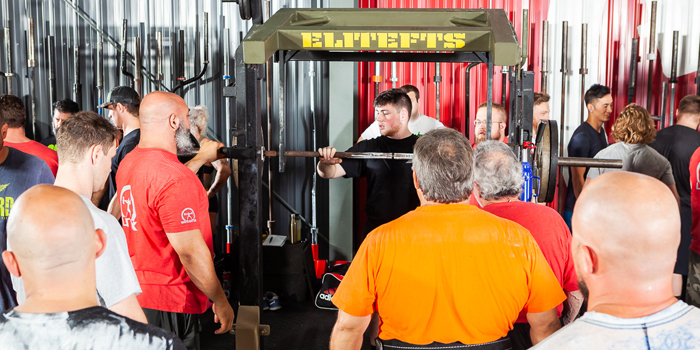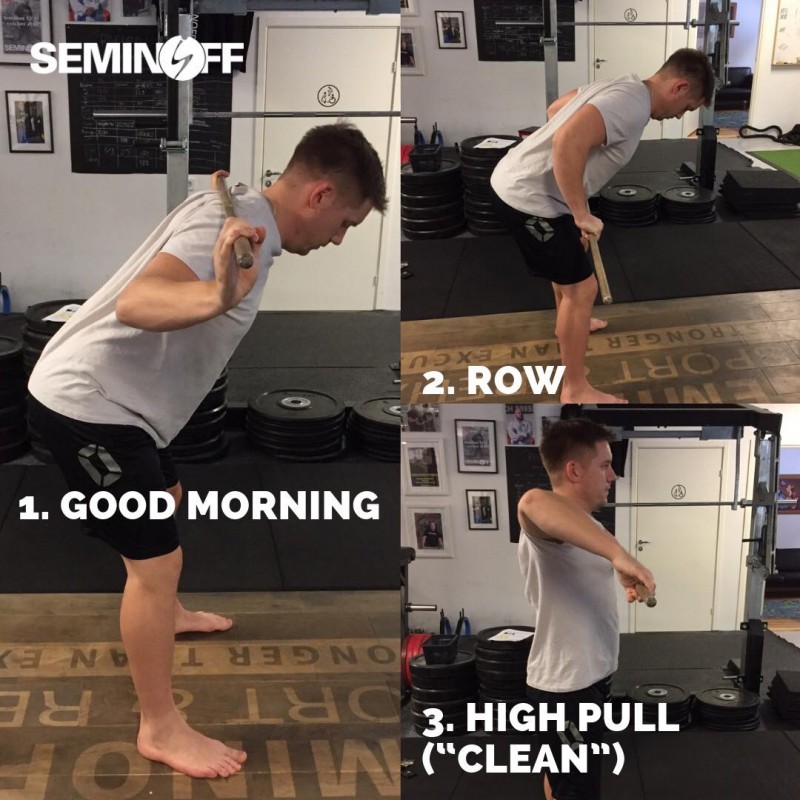
It might sound unrealistic, but the fact is that I’ve used this method to develop three world champions in powerlifting in only 18 months. Try it, and the results will speak for themselves!
This is how it works. First, you must do an analysis of where you fail in the lifts. Is it in the bottom of the lift? Is it the change over from chest muscles to triceps in the bench press? Or is it in the lockout doing your deadlift? Is it the reason you’re still not recovered yet from your last session at the gym? Can the reason be that you’re lacking in technique?
RECENT: Stay Focused and Watch Your Back
When you see what weak part or reason you have, you automatically know how you should move further. To be honest, seeing what the muscles hold is the easy part. There is a lot more to add.
Before you come to pure strength development, there are a few steps that must be considered. And I know this may sound like rocket science for some, but it doesn’t have to be that complicated:
- Posture
- Muscle Function Analysis
- Neurological Adaption
- Technical Skill
- Needs Analysis
- Strength Development
- Results!
Posture
This section should have its own article, but we’ll try to make it easy. Poor posture is very energy draining, even in just a standing position. If you have poor posture, it will affect the results in your training. Think about it. If you pull heavy weights four days a week or more, you need your rest to recover from your training sessions. Having poor posture means that your body creates a compensation pattern that eats up your results since it is very energy draining to keep your sagging body upright.
Just as little as 20 kilograms and 20 centimeters in front of you will create more than 100 kilograms of dead weight on your lower back. Your abs will carry nothing. I have been specialized in this issue for more than 15 years. So, I’ve seen how it affects my clients and how the body automatically becomes stronger just by fixing the posture.
I especially remember a boxer in the national team I had as a client. His shoulders were rotated pretty much forward. When I looked at his training schedule that he had gotten from his boxing trainer, almost all he did was to strike his opponents harder with a weak upper back as the result.
After I fixed the assistance training for him and he got a better posture, he directly felt fresher and suddenly wanted to train more. He already did two sessions a day while working part-time, just to be able to train that much.
Now he finishes his day with a run for 30 minutes — just to finish up his energy. His dad, who also was a client of mine, was worried and thought he might be training too much with this extra run. But I told him that I think this extra run probably just helped him to clear his mind after a long day and to get more relaxed before he slept at night.
Most of you who are reading this article might think this is crazy since you want to know how you should TRAIN to become stronger. But I think this is a good anecdote to show the importance of good posture.
Muscle Function Analysis
If you’re not comfortable with this step, move further.
As a kinesiologist, it’s easy for me to do such an analysis since that is what I’ve been doing for the past 17 years. I realize you don’t want to study extra to fix this step.
Either you can get help from a kinesiologist in your area or buy a book about muscle testing and try it out. I recommend Florence Peterson Kendall’s Muscles, Testing and Function: With Posture and Pain.
It’s important that your muscles have a basal tone so they can fix your joints and skeleton to keep you upright!
Neurological Adaption
This step doesn’t need to be as hard as it sounds. You need the neurological adaption to activate more muscle cells in the right order to get stronger. This neuromuscular coordination will help the muscle chain to work more efficient. For a beginner on this task, I recommend Muscle Activity Quality (MAQ) training. There are a lot of MAQ exercises, but if you should do three, these are the ones you should do. I call these the MAQ 3, which consists of good mornings, rows, and high pulls.
Try to do 10 reps every morning and evening for a month, and I can promise you will notice a difference. This training will help you get a better posture, and it will also help your muscle function to work better. Good mornings help connect with your core muscles. When the core muscles are tight, you start to row and connect the upper back. With the core and upper back connected, you do high pulls and add the middle and posterior parts of the shoulders. And it will help with the next section – technical skill.
Technical Skill
It’s not always lack of pure strength that holds back your strength development. Sometimes the reason you don’t get stronger is that your technical skills are deficient. It doesn’t always help you to add force on a poor movement. Imagine you’re a passenger with a bad driver. Suddenly, he loses control and is on his way to hit a tree. The formula to survive is not to drive faster; this guy needs to slow down and buy driving lessons! If your movement pattern is poor, pure strength won’t help.
Needs Analysis
It’s easy to see what you want to be better at, what you think you need, or what results you need to win a competition. But to see what you NEED is different. This is hard to see by yourself.
The best way to see this is if you train with an honest friend that tells you the fucking truth instead of pounding your back and saying you did a good job after a nasty lift. What you need to focus on depends on technique, muscle imbalances, undeveloped muscles, injuries, job situation, family situation, sleep, eating habits, supplements, when you will compete, etc.
Strength Development
When you get all this shit together, it’s time to focus on strength development. As you read, you will understand the importance of all the areas I mentioned above. Posture, muscle function, neurological adaption, technical skill, and needs analysis results in strength development. We need all this stuff in order to pull or push heavy weights and recover from it.
This part is hard, but you need to do it. Instead of training harder to get stronger at what you’re good at, focus on what your weaknesses are and try to be less weak. It can be a simple thing like a standing row bar.
Learn to explore the family tree of the exercise you want to be better at. I call it a family tree since the main exercise is like a tree trunk, and the supporting/assistance exercises are the tree branches that connect with the trunk of the tree. We also have exercises to build up the support exercises in order to get stronger in the main lifts, which would be the leaves that catch the sunlight, and through photosynthesis, the leaves turn the sun’s rays into energy that the tree can use. This is the same way these small exercises build up your assistance exercises and support your main lifts!
View this post on Instagram
If you know that your bench press gets better by getting stronger in barbell row, then you should ask yourself what you could do to get better at barbell row. Where do you fail in the exercise? Do you get tired in your lower back first? Why do you get tired in the lower back? Is it because you’re lacking belly pressure? Is it a bulging disc? Is it tight hamstrings? Is it a weak upper back that makes you compensate in your lower back? Is your grip proper enough? Are there any exercises that push up the volume too much around any joints so they don’t get enough time to recover? In that case, you must reorganize your training program.
7 Ways to Fix the Above
- Learn to activate your belly pressure.
- Train your upper back more — most people are weak in their upper back.
- Take notes of your training and write down your exercises, volume, and results.
- Choose exercises you hate and learn to love them.
- Don’t ignore small exercises — they are the stitches that connect the bigger ones.
- If you’re good at one thing, do something else.
- Be a good friend and tell your training buddy when his lift sucks.











